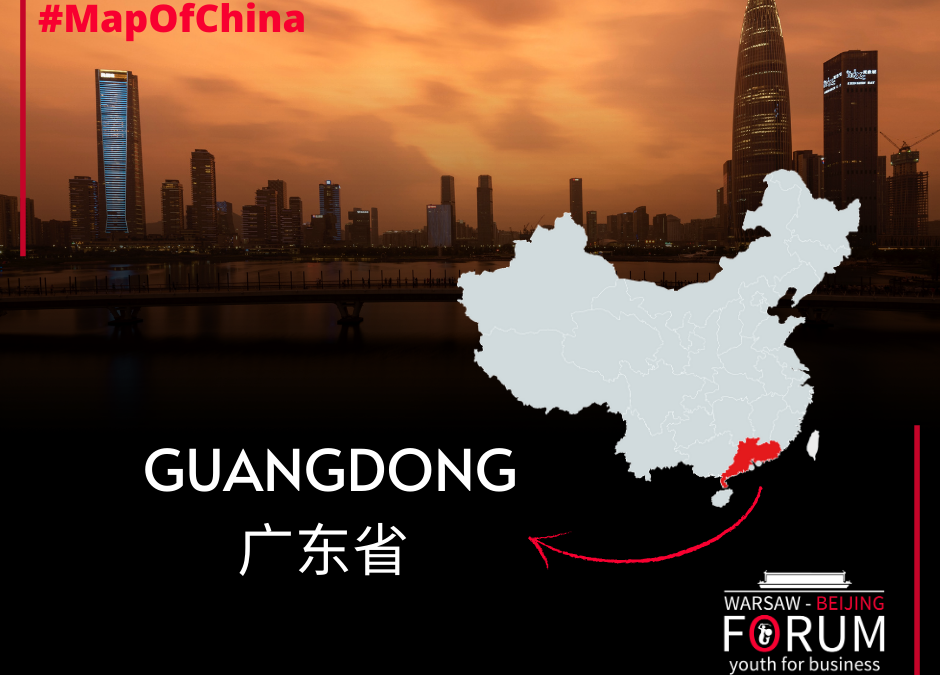Guangdong 广东
Guangdong is the southernmost province of mainland China. Populated by nearly 110 million people, it holds first place in this category, despite being only the fifteenth largest area. Its current position is a result of mainly geographic and economic factors. South China Sea proximity, around 4,000 kilometres of coastline and numerous rivers, among which the longest of them – the Pearl River, quickly made Guangdong one of the most important port regions of China.
Its largest port in the capital – Guangzhou, was considered to be a starting point of the Maritime Silk Road and has remained the centre of China’s trade exchange with the rest of the world. Due to its topography, after the 1978 reforms, widely known as the Opening of China, Guangdong became one of the economic powerhouses.
The main symbol of its rapid transformation is Shenzhen, inside the country’s first Special Economic Zone. In 40 years, it evolved from a tiny fishing village to one of the greatest Chinese cities. Nowadays, the so-called ‘Silicon Valley of China’, is home to the world’s high tech industry giants, such as Huawei, Tencent and ZTE.
Guangdong’s advanced infrastructure, well-developed transport and communication networks make it a perfect spot for investors. As a result, it remains a province with the fastest economic growth. The annual growth rate exceeds 6% or $1.6 trillion, making it equal to Spain’s. The household disposal incomes also reflect the numbers well.
Guangdong is the biggest consumer and retail market in China. In their free time, people can spend their money on restaurants serving world-famous Cantonese cuisine.
Author: Paweł Bedla


Recent Comments